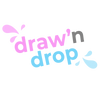HOW DOES DRAWING WITH A MAGIC PEN AFFECT A CHILD'S DEVELOPMENT?

According to psychology, the cognitive processes are sensation, thought, memory, perception, attention and observation. In other words, anything directly related to consciousness. Cognitive processes in a person develop throughout life, but this most actively occurs in childhood, especially in the first ten years. The foundations for the emergence of a creative personality are laid even earlier - up to 6 years. One of the most rewarding activities is drawing moreover with drawing with a magic pen.
By drawing with magic pen, the little man not only learns to see and imagine images, but also to recreate them. By drawing, the child freely expresses his thoughts, emotions, sensations. It depicts his individual attitude to the environment, shows what is important to him and what is secondary.
Thanks to the drawings, we adults can understand the inner world of the baby. This is well used by psychologists. No, for no reason, most psychological tests for children are done by drawing or identifying specific pictures. How exactly does drawing affect different aspects of a child's development?
Impact on Intelligence
At preschool age, children's thinking is figurative. The more new images he creates, the better his intellectual abilities and mental operations develop in the future. The most powerful stimulus for development today is creativity. How thought developed during the period of using images depends on its readiness for the next logical step.
A unique property of human thought - creativity - develops in childhood, in creative activity. Drawing allows the child to create numerous images, to modify them at will, to find new associative links between objects and their images. The search for associations and the generation of images is an excellent mental training that successfully replaces all methods of early intellectual development.
Impact of Drawing Techniques

All children like to draw when they do it well. Sometimes they get very upset if something doesn't work out. The first failures cause irritation or disappointment. Drawing with pencils and brushes requires a high level of mastery of drawing techniques, developed skills and knowledge and working methods.
Very often, the lack of such knowledge and skills quickly turns the child away from drawing, because as a result of his efforts, the drawing turns out to be incorrect, it does not correspond to the child's desire to get a image close to his idea or the real object he tried to represent. Therefore, it is necessary to use new drawing techniques which will create a successful situation for children and form a stable motivation for drawing like Draw'n Drop
It is a non-traditional drawing technique that allows the child to overcome the fear of failure in visual activity. This technique helps children to feel free, to free themselves, to see and to transmit on the water what is difficult to do with conventional methods and materials such as pencil and paper. Indeed, children develop their imagination and creativity by drawing on water with a magic pen.
In classes using non-traditional techniques, children develop orientation-seeking activities, fantasy, memory, aesthetic taste, cognitive abilities, independence, child experiences. Many types of non-traditional drawings help to increase the level of development of hand-eye coordination.
Influence on fantasy and imagination

Drawing with a magic pen develops the imagination - the ability to mentally represent visual images. Thanks to this, a person can process past experience and create new connections between the received images. The more such connections are formed in the brain, the more thinking develops.
Fantasy is necessary for the future adult - it allows a person to make bold assumptions, invent and create something fundamentally new. In drawing, this develops very well, because the child has to think about the picture in detail before he can depict it.
What a child is able to transfer to paper does not translate everyone he imagines. This is why children often see more in their drawings than what is drawn. They fantasize, inventing different stories about their images. Parents should not be annoyed by such a "fantasy"! This ability must be maintained without becoming a boring boredom, pointing out to the child the inconsistencies between a fictional image and an inane drawing. On the contrary, it is better to enter the game and try to "see" the transformation of the image.
A child can revive their fantasies with the help of innovative creative development. 3D coloring combined with the application on a mobile phone can create three-dimensional color images, creating interest in the coloring process and the result. After all, the more unexpected colors the artist uses, the quirkier the character that comes to life on the pages becomes!
Influence on speech development

Even before the child even begins to represent something concrete, he is already "telling" his doodles and seeing familiar images in them. When drawing, children often comment on what they are depicting and the drawing becomes a living picture - a drama whose characters act out a performance.
Parents should listen carefully to the stories of the child and ask leading questions, be interested in characters, plot, details. Talking while drawing ("now I take white, then pink, I add water") helps the child to become aware of his actions and to coordinate them better.
In turn, speech affects drawing: researchers of children's creativity argue that "silent" drawing develops less intensely, the images in it are poorer in detail, are often stereotyped and borrowed. Getting together with adults helps to strengthen emotional contact, find a reason to communicate and enrich speech.
Influence on the development of perception
Perception in childhood is still imperfect, and drawing with magic pen stimulates its development, forcing the baby to study objects for the image and discover in them new qualities that he hadn't noticed before. By drawing with a magic pen, the ability to observe and analyze an object is trained, which is very useful for the development of thinking.



